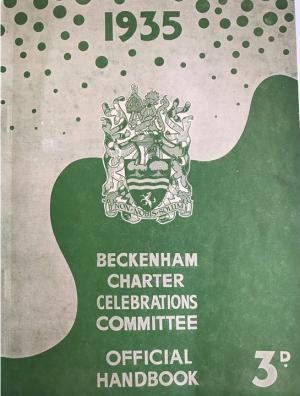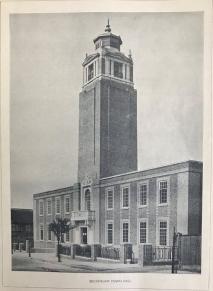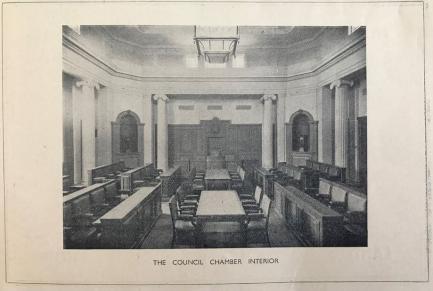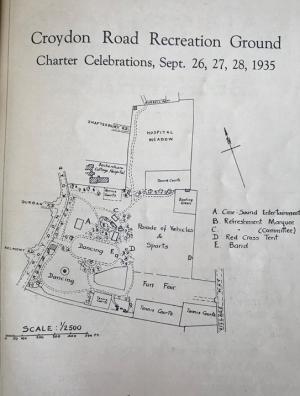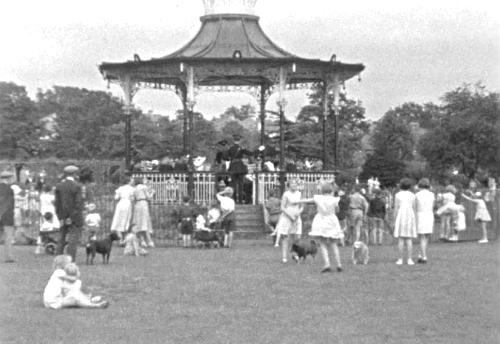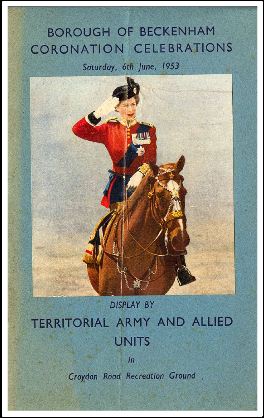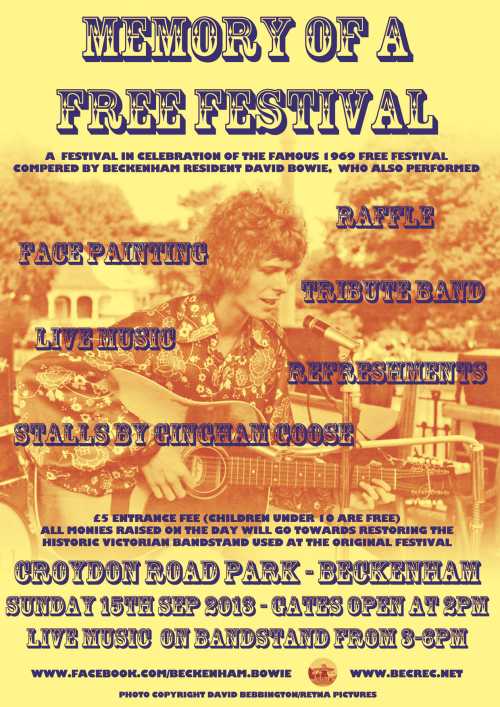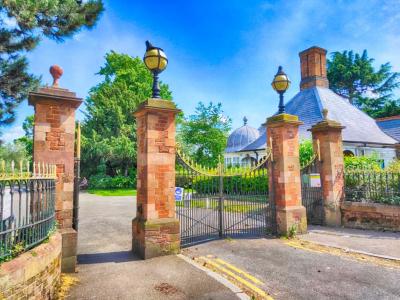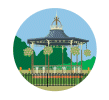Croydon Road Recreation Ground, together with that at Alexandra Road, now in Penge, was purchased by the Beckenham Local Board to provide public open spaces which had been lacking since the loss of the Fair Field for housing in the 1870s. The site was part of the open farmland which stretched along Croydon Road, even within the memory of people still living, to the hamlet of Elmers End. The park first came into use in the autumn of 1890 but its formal opening was on September 23rd 1891. On that date the village was ablaze with flags and bunting as the gentry, clergy, tradesmen, representatives of every organisation, and all the schoolchildren each wearing a medal specially minted for the occasion, made their way to the new park with bands playing and church bells pealing.
The layout of the ground has not basically changed since the opening day. It was the work of Reid and Bornemann of Sydenham who were awarded ten guineas by the Local Board for their designs for two parks. The Opening Organising Committee made a profit from their efforts and this was used to finance the construction of the 'oriental' shelter and drinking fountain erected by Weeks, the local ironmonger, and which features on so many of the early postcards of the park (see picture towards the bottom of page). The elegant bandstand, one of a pair by the Glasgow firm of McCallum & Hope Ltd (the other originally stood in Alexandra Park, Penge) probably dates from about the same period. In 1914 the Council added the Hospital Meadow to the park though it was not able to make full use of the additional ground until the wartime allotments were removed in 1926. The hospital authorities later acquired a small part of the meadow for expansion but its attempt to compulsorily purchase the whole was finally defeated after a public enquiry in 1953. In the early 1930s access was provided to the newly extended Village Way which had previously been merely a cul-de-sac off the High Street. Originally there was an ornamental lake fed by a natural spring and incorporating a fountain from the gardens of Clock House in the park. This was replaced by the present paddling pool just before the outbreak of the last war.
During both wars the park was partly given over to allotments. In the last war it housed a wardens post and a surface shelter whilst the paddling pool became an Emergency Water Supply Point for the duration. Life in the park carried on as normally as possible, the Horticultural Society held its annual show as usual in July 1940 and the refreshment hut continued to function though it had to be granted a £6 rent refund in the last year of the war, not surprisingly, as trade was somewhat reduced by the hail of flying bombs which fell in the area. The park itself got off lightly; its haystack burned down in World War I and a couple of high explosive bombs did minor damage in September and November 1940.
Sport has always been an important feature of the park. Before the 1914-18 war the annual cricketing contest between the coachmen and the gardeners, both numerous in the prosperous new town, was the highlight of the season. Beckenham Bowling Club, which still plays in the park, started life here as the Beckenham Bowling and Quoits Club round about 1899. The annual cricket match between the coachmen and gardeners of the local gentry became an important annual event. The picture below dates around 1906. A much larger white jack was then used and the rink had a white line or tape down the centre.
Over the years the Recreation Ground has been the meeting place of the residents of Beckenham whenever there have been funds to raise or events to celebrate. Coronations, Jubilees, Hospital Fetes, Empire Days and May Queen coronations have all seen the park packed with people enjoying the attractions set up for the occasion. Perhaps the biggest event to be staged was the annual flower show. Beckenham Horticultural Society was formed in 1892 and proceeded to mount an annual flower show which, in Edwardian times, rivalled Chelsea. The shows finally ceased in 1972. In addition to the annual flower show, Croydon Road Recreation Ground has been the scene of almost every civic and national occasion the town has celebrated. The shallow oval depression near the entrance, sometimes referred to as the Hippodrome, was flooded in winter and used as a skating rink.
Although the annual flower show and the Hospital Fete together with its traditional fair are no longer held, the crowning of the Beckenham May Queen still takes place in April every year, following a procession through the district of all the May Queens and their attendants from the surrounding areas.
Ralph Hutchings from Chislehurst lived in Village Way after the war and remembers 'The Cossacks' performing in Croydon Road Rec. in 1945/46. He writes: "With
regard to The Cossacks - I remember quite clearly that
they seemed to have quite small horses, I think that they
wore furry hats (the Cossacks not their horses) and were
otherwise a bit drab. Four to six lanes were marked out
about 150/200 yards long and they raced to a
finishing line. He asks:
Does anyone else remember them?
In 1968 Beckenham
Round Table organised a Donkey Derby in the
Recreation Ground. In mid-1969, David Bowie was still a long way from superstar status, despite having been in the music business for several years. He was living in Beckenham with a friend Mary Finnigan, and appearing most Sundays at The Three Tuns pub in Beckenham High Street (now Zizzi). David organised a Free Festival at Beckenham Recreation Ground on August 16, 1969 of which more information and several pictures can be found at the Beckenham History website. In celebration of the 1969 Free Festival, The Friends held a live music festival on and around the bandstand area in September 2013
. |
||||||||||
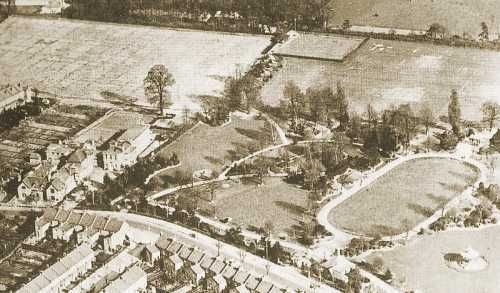
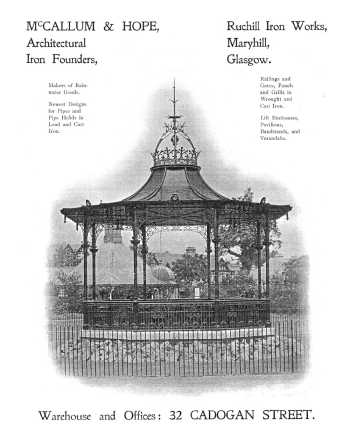
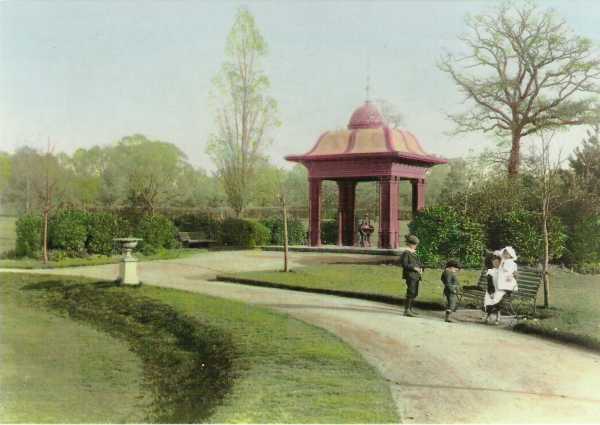
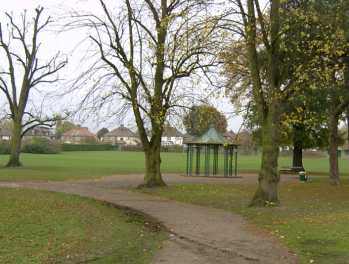
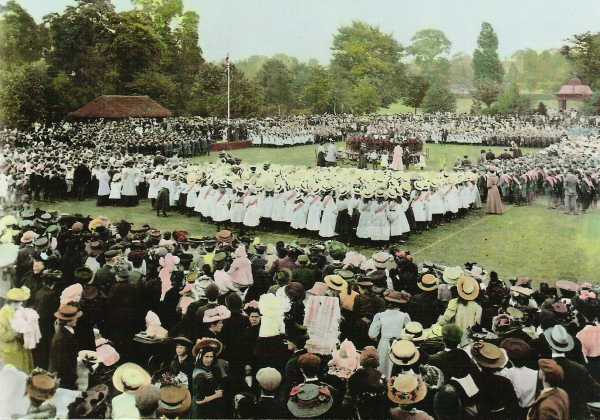
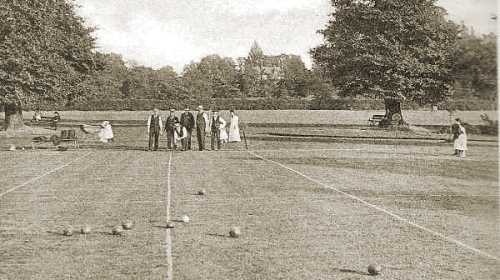
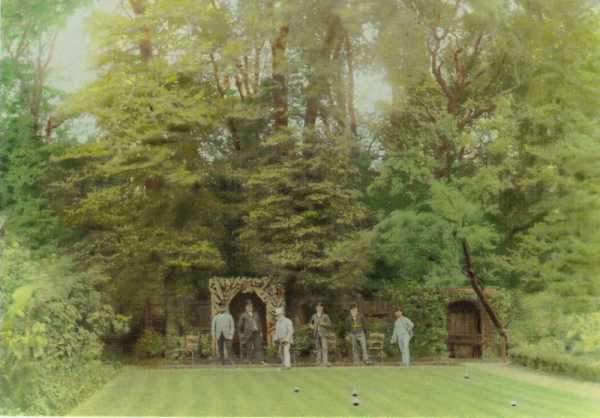
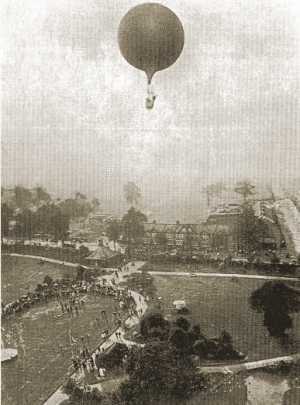
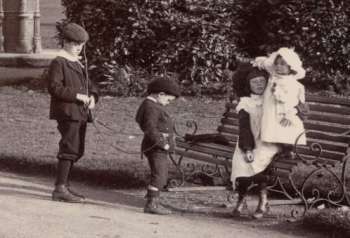 The same site
was the scene of a unique occasion in 1902 when, to
celebrate the coronation of King Edward VII, Britain's
first public mail-carrying balloon soared aloft with M.
Gaudron, a French balloonist and Dr. Barton, a local
medical practitioner, as crew. Mail was dropped at three
points in Kent and the balloon itself then crossed the
Channel and landed near Calais. Two more balloons
ascended from the same spot at the 1905 flower show and,
although by this time airmail had lost its novelty, the
few cards which have survived are eagerly sought by
collectors.
The same site
was the scene of a unique occasion in 1902 when, to
celebrate the coronation of King Edward VII, Britain's
first public mail-carrying balloon soared aloft with M.
Gaudron, a French balloonist and Dr. Barton, a local
medical practitioner, as crew. Mail was dropped at three
points in Kent and the balloon itself then crossed the
Channel and landed near Calais. Two more balloons
ascended from the same spot at the 1905 flower show and,
although by this time airmail had lost its novelty, the
few cards which have survived are eagerly sought by
collectors. 